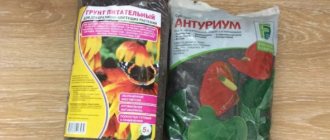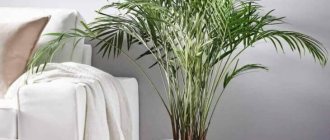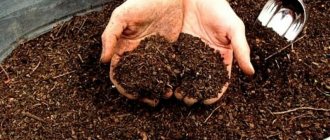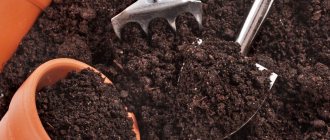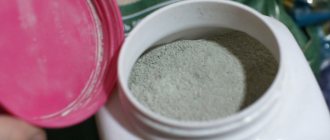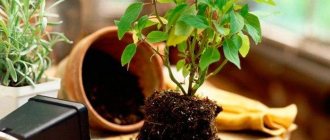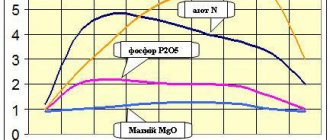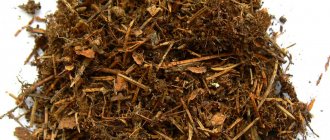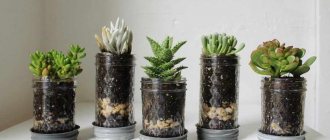Updated: 04/22/2021 16:44:21
Expert: Nikolay Alexandrovich
*Review of the best according to the editors of expertology.ru. About the selection criteria. This material is subjective in nature, does not constitute advertising and does not serve as a purchase guide. Before purchasing, consultation with a specialist is required.
Each type of plant requires soil that would help it develop correctly and fully. For this purpose, a special soil is prepared with a balanced composition, acidity, and the required amount of micronutrients. It should not contain foreign impurities. A high-quality mixture allows air to pass through well, it is soft, crumbly, with optimal humidity. For the convenience of gardeners, it is packaged in bags of different sizes.
Soils are universal, that is, suitable for many types of plants. But they do not always take into account the peculiarities of whimsical varieties. For domestic flowers, conifers, and vegetable crops, special compositions are created that are as close as possible to the natural growing environment. When mixing, different types of soil are taken. The most fertile is black soil. It contains up to 9% humus, perfectly absorbs and retains moisture. Black soil is often combined with a peat base and sand. This composition is relevant for vegetable gardens and garden plots.
Some experienced summer residents prefer to make their own soil, improving it for a specific crop. But still, the majority buy ready-made soil, hoping for the professionalism of the producers. Our review presents 12 soils for plants, which received high ratings from consumers in all respects. Experts assessed their quality and highlighted their advantages and, if any, disadvantages.
Rating of the best soils for plants
| Nomination | place | Name of product | price for 10 liters |
| The best universal soils for plants | 1 | COMPO SANA universal soil soil | 210 ₽ |
| 2 | Terra Vita soil Living earth universal | 80 ₽ | |
| 3 | Soil Good helper universal | 50 ₽ | |
| The best soils for indoor plants | 1 | FASCO flower soil | 60 ₽ |
| 2 | Soil PETER PEAT Hobby line for indoor plants | 90 ₽ | |
| 3 | Veltorf universal soil for indoor flowers | 80 ₽ | |
| The best soils for vegetable crops | 1 | BIUD vegetable soil | 90 ₽ |
| 2 | Fasko Krepysh soil for seedlings | 60 ₽ | |
| 3 | Morris Green soil for growing vegetables | 90 ₽ | |
| The best soils for aquarium plants | 1 | Nutrient soil for aquarium Dennerle Deponitmix Professional 9 in 1 | 4 620 ₽ |
| 2 | Tetra ActiveSubstrate | 1 220 ₽ | |
| 3 | Nutrient soil JBL Manado improves water quality and stimulates plant growth | 1 250 ₽ |
The best soils for indoor plants
FASCO flower soil
Rating: 4.9
First place was awarded to soil from a well-known brand, which is suitable for all types of house plants. It contains a balanced mineral complex that saturates it with useful substances, without overloading it with fertilizers. The environmentally friendly composition includes selected components and does not contain debris, impurities, or harmful additives.
FASKO products are recommended by professional flower growers. It has received awards for quality and efficiency more than once. The company continues to improve its formulations, making it possible to enjoy beautiful ornamental plants without much effort.
The soil provides good aeration. It is loose and does not crack when dried. Optimal humidity and acidity guarantee good survival rate, intensive growth, and accelerated flowering. Consumers note that the soil has a crumbly structure, contains all the necessary microelements for healthy growth and improvement of the decorative properties of plants, and strengthens fragile, almost non-viable roots.
Advantages
- versatility of use;
- hygroscopicity;
- without pathogenic microbes;
- soft consistency.
Flaws
- not identified.
Soil PETER PEAT Hobby line for indoor plants
Rating: 4.8
The second line is occupied by soil, which serves as an alternative to fertile soil and is in no way inferior to it in nutritional composition. It is created from complex mineral fertilizer, high-moor and low-lying peat, agroperlite, limestone flour and river sand. The mass fraction of moisture does not exceed 65%. The soil increases the survival rate of only planted flowers, and also improves the decorative qualities of already growing ones.
The structured composition has optimal moisture permeability. It is clean, without debris, lumps, or weed seed residues. PETER PEAT product provides long-lasting nutrition and improves the effect of feeding. The manufacturer conducted tests, which confirmed positive results from its use.
Many consumers note that various indoor plants feel comfortable in the soil. After transplantation, strengthening and more intensive growth are noticeable. Mold and rot do not appear. There is no smell. Buyers give high scores, experts also confirm the quality.
Advantages
- balanced composition;
- free from bacteria and weeds;
- wide range of applications;
- Suitable for demanding flowers.
Flaws
- not identified.
Author's word
Previously, for indoor gardeners, the question of choosing a substrate for growing flowers at home was simple. They took garden soil, or that which the mole had dug up, or under spruce and pine trees in public gardens and city parks.
Now this is the lot of people of the “old school”, avid amateurs, conscious people or progressive youth.
Now many gardeners, especially those living in large cities, most often use purchased soil for planting, replanting plants and growing seedlings. Therefore, more attention will be paid to it in the article.
A special place in the preparation of the soil mixture is occupied by additional components that are used to increase looseness, fertility or change acidity. A separate chapter will be devoted to them.
At the end of the article, I will consider the advantages of each option and tell you what I chose for myself.
The best soils for vegetable crops
BIUD vegetable soil
Rating: 4.9
Gold medalist - soil that is used on open soils, in greenhouses, greenhouses for growing nightshade, pumpkin, cruciferous, and all types of greens. The multicomponent mixture is ready for use. It is used during planting of seedlings, to strengthen young plants, and increase crop yields. The consistency is loose, soft, optimally structured. The neutral environment ensures high survival rate in the northern regions.
The soil is enriched with fertilizer based on horse manure, which has powerful fungicidal properties. It consists of a mixture of lowland, transitional and high-moor peat, drainage and agroperlite sand, dolomite chips, and phlogopite. This combination provides plants with phosphorus, potassium, magnesium and other useful substances.
Nitrogen of organic origin stimulates the growth and development of the green part of crops. When subsequently applying fertilizers, the soil absorbs them well, holds them, prevents rapid washing out and guarantees a long-lasting effect.
Advantages
- based on bioorganic fertilizers;
- protection of roots from fungus and rot;
- maintaining optimal humidity;
- testing in the Central Botanical Garden.
Flaws
- not identified.
Do-it-yourself soil or as it was before?
As I said at the very beginning, most indoor flowers can be grown in cultivated and prepared garden soil or where a mole has dug up.
In urban conditions, it is good to collect soil under the Christmas trees in the park (coniferous soil), where it is lighter and more nutritious. But such soil is slightly acidic and is not suitable for all plants (you can add a little wood ash or coal). But it is great for azaleas, begonias, gloxinia, and hydrangeas.
Previously, you could buy turf and leaf soil in stores. It was these species and other, less popular ones that were described to us by teachers at the institute during lectures.
- It is advisable to disinfect any soil dug up in natural conditions, so that later no bugs crawl in the flowers or midges fly around.
How to disinfect the soil?
The main methods of soil disinfection are: heating (calcination), steaming, freezing and treatment with fungicides and insecticides.
Warming up
The most effective and affordable way to disinfect soil. There are several options for disinfection, I will tell you how I do it myself. This is especially often done in the fall or spring before sowing seeds for seedlings and then planting them in cups.
- I put foil on a baking sheet (an iron sheet for the oven) and sprinkle a 2-3 cm layer of garden soil on top.
- Then I put the baking sheet in the oven to bake for about 20-30 minutes with maximum heat. The bottom layer of soil still remains darker in color (wet).
- I pour the disinfected soil into a bucket or basin. It can be used after it has cooled completely.
Instead of foil, you can add a 1 cm layer of sand, which will immediately create a looser soil mixture.
Some gardeners like to disinfect the soil on the kitchen stove (cooktop). 2-3 cm of sand are poured into the bottom of a metal pan (stainless steel, aluminum), and 7-12 cm of earth on top, depending on its size. A 3-4 liter pan takes 20-30 minutes to heat, and a 10 liter pan takes about an hour.
Advice from the Flower Festival magazine: “It is advisable to sterilize not only the soil, but also coconut fiber and tree bark.
Disadvantages of sterilization
During soil disinfection, not only pathogenic microflora, but also beneficial microorganisms die. The soil becomes sterile and dead, which negatively affects the plants.
Therefore, 3-4 weeks after transplantation, when the root system has recovered from mechanical damage, it is advisable to enrich the soil using special preparations (Vozrozhdenie, Baikal, Vostok EM-1, etc.) or vermicompost (biohumus).
Also, one of the disadvantages of sterilization by heating is the unpleasant smell of hot, calcined earth. But for the sake of a good cause, you can tolerate it.
To be honest, I personally do not always sterilize street soil and do not always enrich it after disinfection. But I don’t encourage you to do that.
The best soils for aquarium plants
Nutrient soil for aquarium Dennerle Deponitmix Professional 9 in 1
Rating: 4.9
The first place nutrient soil was created based on years of research and taking into account the needs of popular aquatic plants. It does not harm the inhabitants of the aquarium. The substrate has a composition rich in humus and minerals. All raw materials are carefully selected and tested. The iron concentrate stimulates the rapid formation of green leaves. Peat maintains optimal pH balance and regulates acidity.
Porous granules have increased water conductivity. They are converted into a biofilter, keeping them clean for as long as possible. Plants receive the required amount of microelements, while being securely attached to the bottom. The most demanding species thrive with the Dennerle product.
There are no phosphates or nitrates in the composition, which contribute to uncontrolled algae growth. As a result, the aquarium creates exactly the environment that the consumer intended. Neat granules look attractive and improve appearance.
Advantages
- stopping algae growth;
- long lasting nutritional effect;
- harmless to inhabitants;
- active water purification.
Flaws
- not identified.
Tetra ActiveSubstrate
Rating: 4.8
In second place is soil from a well-known brand that specializes in floristry and equipment for aquariums. Most of its products have patents and are produced using unique advanced technologies. The natural substrate is in the form of smooth granules, which prevents injury to bottom-dwelling fish. It activates rapid plant growth. Water permeability is 50% higher than ordinary gravel.
The soil reduces the strain on the filter by reducing organic contamination, thereby extending the life of the device. The water does not become cloudy, the roots do not rot. The optimal structure ensures the correct microclimate for all types of aquarium plants. ActiveSubstrate creates a rigid cushion so that even fine roots are anchored in the pores of the granules.
According to reviews, the soil showed excellent results in practice. It has an attractive appearance, which is very important from an aesthetic point of view, provides nutrients, and guarantees healthy growth. With the mixture, the normal functioning of the aquarium is maintained and the burden on humans is reduced.
Advantages
- natural composition;
- fixation of fragile roots;
- safety for fauna;
- neutral in water.
Flaws
- not identified.
Nutrient soil JBL Manado improves water quality and stimulates plant growth
Rating: 4.7
The third was a product that is designed to create a favorable environment and intensive sustainable growth of plants. It is produced by a renowned company that develops innovative products ahead of many competitors. Her know-how is primer of various colors, which makes it possible to create the desired design. The natural porous structure allows for the growth of beneficial bacteria.
The soil helps maintain the crystal purity and transparency of the water, increasing the level of filtration. It serves as a buffer. It releases the required amount of nutrients, and when they are in excess, absorbs them back. This helps prevent intensive growth of aquatic weeds. The round shape does not harm the inhabitants. Thin roots are securely fixed, which prevents fish from eating them.
According to reviews, the mixture from JBL is an excellent solution for aquariums from both a practical and aesthetic point of view. She looks very attractive. Thanks to the balanced, non-toxic composition, plants quickly take root and the water does not become cloudy.
Advantages
- beautiful shade;
- bacterial dispersal;
- algae growth control;
- intensive cleaning.
Flaws
- not identified.
Do we make it ourselves or buy substrate?
In this section, I will compare the advantages and disadvantages of making your own soil mixture from street soil and buying factory-made peat-based soil, and also sum up the results.
| Advantages | Flaws | |
| Street soil (garden soil, mole soil, from under spruce trees) | Shareware Organic (especially important for those who do not use mineral fertilizers and want to consume organic vegetables) Need to water and feed less often | The need for sterilization |
| Factory soil based on peat | Simplicity (no need to look for where to dig up soil) Year-round availability Lower weight | The extraction of peat and the production of mineral fertilizers harms the environment Price Earlier and more frequent fertilizing due to rapid depletion of nutrients Peat is difficult to saturate with moisture after severe drying out. Poor stability of pots with large plants Not suitable for growing organic vegetables (not even recommended for seedlings) |
